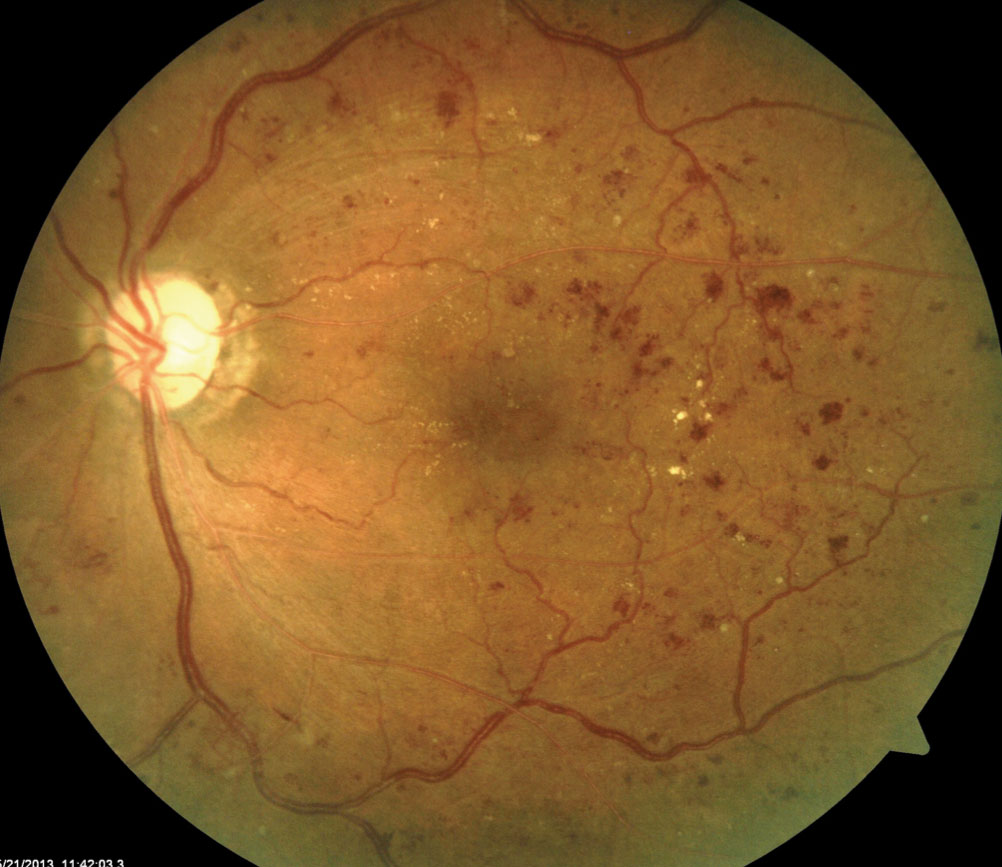 |
Researchers identified a new OCT-A parameter to help predict DR severity. Photo: Julie Torbit, OD. Click image to enlarge. |
Clinical classification of diabetic retinopathy is crucial when it comes to the management of this disease. Recognizing the need for clinically feasible screening methods, researchers aimed to assess and validate the clinical utility of OCT-A-derived retinal capillary density and caliber in determining disease severity among this patient population.
This multicenter, cross-sectional, prospective study of 594 eyes from 385 subjects assessed retinal capillary density and caliber via OCT-A scans. The images were collected from non-diabetic controls and subjects with mild or referable diabetic retinopathy. The researchers used these images to calculate vessel skeleton density and vessel diameter index, measures of capillary density and vascular caliber, respectively.
Group one—a training cohort of 509 eyes—included 159 control, 155 mild nonproliferative diabetic retinopathy (NPDR) and 195 referable diabetic retinopathy eyes. Group two was a validation cohort that included 85 eyes (16 mild NPDR and 69 referable diabetic retinopathy).
The study authors evaluated discriminatory performance of vessel skeleton density and vessel diameter index through multivariable logistic regression models predicting disease severity with adjustments for sex, hypertension and hyperlipidemia. In Group one, they found that the addition of these two factors improved the model’s area under the curve for discrimination of eyes with diabetic retinopathy of any severity from controls, as well as eyes with referable diabetic retinopathy from mild NPDR.
The data demonstrated that vessel skeleton density and vessel diameter index provide additional information when distinguishing between diabetic retinopathy and healthy eyes, as well as between referable and mild disease. The researchers also found that vessel skeleton density was more robust compared with vessel skeleton index when evaluating these patients.
This study revealed that vessel skeleton density significantly improves discrimination of clinically important diabetic retinopathy categories in comparison to age, sex and medical comorbidities alone in a population of subjects evaluated for diabetic retinopathy by a retina specialist, according to the study authors.
“In addition, the same finding holds true when vessel skeleton density is applied in a cohort of patients referred for evaluation of diabetic retinopathy via a teleretinal screening clinic using fundus photography,” they concluded. “These findings suggest that OCT-A-derived metrics can significantly improve or complement staging of diabetic retinopathy in real-world clinical settings.”
Kushner-Lenhoff S, Kogachi K, Mert M, et al. Capillary density and caliber as assessed by optical coherence tomography angiography may be significant predictors of diabetic retinopathy severity. PLoS One. January 26, 2022. [Epub ahead of print]. |

